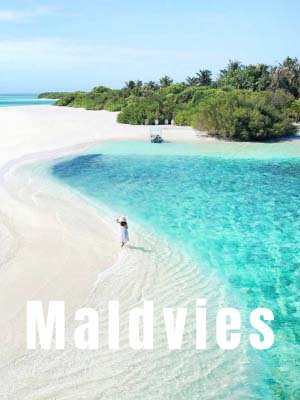
About Rajasthan Tour
Rajasthan, located in the northwestern part of India, is a state known for its rich cultural heritage, majestic forts, palaces, and vibrant festivals. It is the largest state in India by area and is bordered by...Pakistan to the west, Gujarat to the southwest, Madhya Pradesh to the southeast, Uttar Pradesh and Haryana to the northeast, and Punjab to the north. Key Highlights of Rajasthan 1. Historical Significance 2. Major Cities and Attractions 3. Culture and Festivals 4. Cuisine 5. Wildlife and Nature Best Time to Visit Travel Tips Would you like more detailed information on any specific aspect of Rajasthan?
Rajasthan has a long and storied history, with roots tracing back to the ancient Indus Valley Civilization. It has been the seat of several powerful Rajput kingdoms, each contributing to the state’s rich architectural and cultural heritage. The forts, palaces, and temples of Rajasthan stand as testament to its glorious past.
- Jaipur (The Pink City): The capital city known for its stunning palaces, forts, and vibrant markets. Key attractions include the Amber Fort, Hawa Mahal, City Palace, and Jantar Mantar.
- Udaipur (The City of Lakes): Famous for its beautiful lakes, palaces, and romantic settings. Major sights include the City Palace, Lake Pichola, and the Jag Mandir.
- Jodhpur (The Blue City): Known for its blue houses and the imposing Mehrangarh Fort. Other attractions include Umaid Bhawan Palace and Jaswant Thada.
- Jaisalmer (The Golden City): Renowned for its golden sandstone architecture, including the Jaisalmer Fort, Patwon Ki Haveli, and the Sam Sand Dunes.
- Bikaner: Famous for the Junagarh Fort, Karni Mata Temple (Rat Temple), and its camel festival.
- Pushkar: Known for the sacred Pushkar Lake, the Brahma Temple, and the annual Pushkar Camel Fair.
- Mount Abu: The only hill station in Rajasthan, known for the Dilwara Temples, Nakki Lake, and stunning viewpoints.
Rajasthan’s culture is characterized by its folk music and dance, vibrant attire, and traditional arts and crafts. Some of the prominent festivals include:
- Diwali: The festival of lights, celebrated with great enthusiasm.
- Holi: The festival of colors, marked by vibrant celebrations.
- Desert Festival: Held in Jaisalmer, showcasing traditional Rajasthani music, dance, and camel races.
- Teej: Celebrated by women with songs, dances, and swings.
- Pushkar Camel Fair: One of the largest livestock fairs in the world, combined with cultural performances and competitions.
Rajasthani cuisine is known for its rich flavors and unique preparations, often influenced by the arid climate of the region. Some popular dishes include:
- Dal Baati Churma: A combination of lentils, baked wheat balls, and sweetened cereal.
- Laal Maas: A spicy mutton curry.
- Gatte ki Sabzi: Gram flour dumplings cooked in a spicy yogurt sauce.
- Ker Sangri: A traditional desert vegetable dish.
- Ghewar: A sweet dish typically made during festivals.
Rajasthan is home to several wildlife sanctuaries and national parks, including:
- Ranthambore National Park: Famous for its tiger population and diverse wildlife.
- Sariska Tiger Reserve: Known for its Bengal tigers and rich biodiversity.
- Keoladeo National Park: A UNESCO World Heritage Site, renowned for its birdlife.
- Desert National Park: Located near Jaisalmer, offering a unique ecosystem with desert flora and fauna.
The best time to visit Rajasthan is during the cooler months, from October to March. The weather is pleasant, making it ideal for sightseeing and outdoor activities.
- Dress Modestly: Rajasthan is a culturally rich state with conservative values. Dress modestly, especially when visiting religious sites.
- Stay Hydrated: The climate can be dry, especially in the desert areas. Keep yourself hydrated.
- Respect Local Customs: Be respectful of local customs and traditions, particularly during festivals and in rural areas.
- Plan Ahead: Book accommodations and travel arrangements in advance, especially during peak tourist season and major festivals.
Our Hot Selling Tours
Our Offer Packages
Testimonials
Jatin Gupta
“I am so happy with Travel Surity they made trip memorable. I can never forget it. I especially thanks to Mr. Aman who gives us a best services any gives follow up at the time of trip. And our hotel staff was also too Good. Once again I heartily thanks to Travel Surity . And very special thanks to Mr. Aman Thanks a lot Aman for my memorable tour .”
Jatin Gupta
Raj Gopal
“Must go for.anytime I luv to trust…aman sir is very helpful 24*7 available for everything… Luv to go again nd again wid dis team… Amazing xperinces… .”
Raj Gopal
Anup Singh
“I am so happy with travel surity they gives us a memorable trip I never forget it. I especially thanks to Mr. Aman who gives us a best services any gives follow up at the time of trip. And our cab driver Mr. Soni pal gi and our hotel staff was also too Good. Once again I heartily thanks to travel surity and travel triangle and the Hotel staff and our cab driver. And very special thanks to Mr. Aman. Thanks a lot Aman for my memorable tour .”
Anup Singh
Aakash Arora
“Reliable and the best… Thanks for Such a Nice Trip…”




